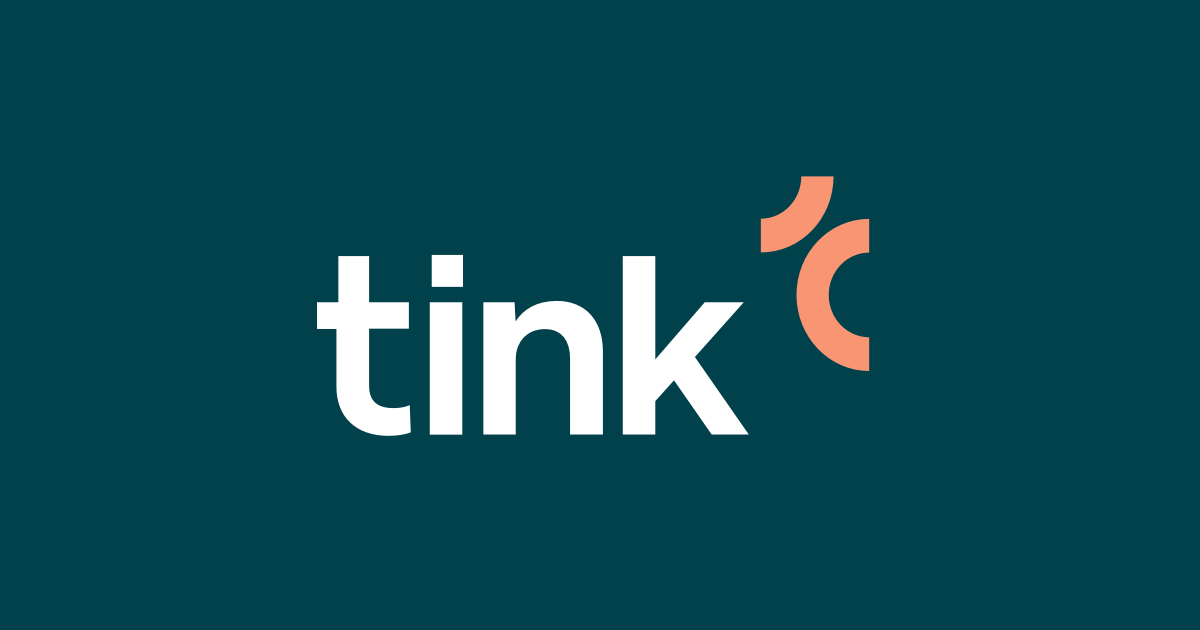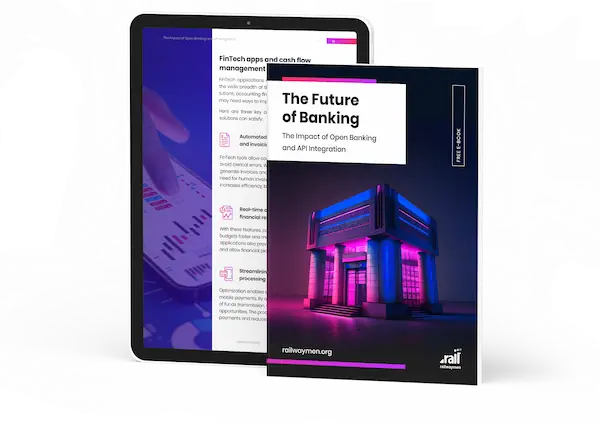FinTech companies are increasingly opting for external integration because they see many opportunities for their business, especially since the industry is regulated by strict regulations to which they are obliged. Companies see opportunities in expanding the product range, increased productivity, and better service for the potential customer.
In this article, you will learn more about Plaid integration as well as Tink, the advantages of both variants, what security standard they have, and we will also help you answer the question of which one is the better choice.
Table of Contents:
1. What exactly is the Plaid for?
2. Security Standards followed by Plaid.
3. What are the Benefits of integrating Plaid with other applications?
5. Is Tink safe - all implemented security standards.
6. What are the Benefits of integrating Tink?
7. Why should you consider integrations for your business? Key Features of Plaid and Tink
8. Which platform should you choose?
8.1. Plaid or Tink integrations in Railwaymen.
What exactly is the Plaid for?
Plaid was founded in 2013 by Zach Perret and William Hockey in San Francisco, California. The firm currently operates in the United States, Canada, the United Kingdom, France, Spain, Ireland, and the Netherlands. The original plan was to create a consumer finance management product that included budgeting and accounting software. They decided to focus their core business on a unified banking API due to the difficulty of linking bank accounts required for these tools. Plaid is a company based on financial technology, that connects financial services apps with users' banks and credit card providers. It gives businesses the tools and access they need to build a digitally enabled financial system.
Plaid Financial Ltd. is an authorized payment institution regulated by the Financial Conduct Authority under the Payment Services Regulations 2017 for the provision of payment services. The challenge that Plaid solves is to enable users to link financial accounts, building a digital connection to a single financial institution in a quick way, which results in saving valuable time.
Plaid's main product is Link - an API that sits between a financial institution and an application or service that requires access to specific bank information.

Source: https://commons.wikimedia.org/
Companies can build applications on the Plaid API without having to spend time and money figuring out how to integrate with financial institutions. Plaid takes on the burden of complex integrations, allowing businesses to focus on their primary goal of developing a useful financial application.
Many financial companies want access to financial data for many reasons and reasons. For example, this could include a portfolio aggregator that needs access to investments or a budget site that has access to banking and credit card transactions.
By using Plaid, it is possible to access this information without providing private bank or credit card credentials.
How does Plaid work?
Plaid can be used to connect to a bank account or credit card in three basic steps:
-
Step 1 - During registration in the application supported by Plaid, a list of financial institutions will be available, from which you select your target institution, and then enter your login and password.
-
Step 2 - In less than a few seconds, Plaid encrypts the data you choose to share and securely transfers it to the app you want to use. It should be remembered that sensitive data such as password and login are never made available.
-
Step 3 - Plaid works behind the scenes to build a secure, permanent connection between the app and the bank of your choice.
 Source: https://plaid.com/blog/the-all-new-plaid-link/
Source: https://plaid.com/blog/the-all-new-plaid-link/
Security Standards followed by Plaid
Plaid uses some of the highest encryption protocols available when sending financial data. This includes, among others:
-
Advanced Encryption Standard (AES 256), which is a specification for the encryption of electronic data.
-
Transport Layer Security (TLS), which is a cryptographic protocol designed to provide communications security over a computer network.
-
Multifactor authentication, which requires users to enter additional information, except their password.
-
Cloud infrastructure technologies, which are a collection of security measures designed to protect cloud-based infrastructure, applications, and data.
-
Security audits conducted by researchers and financial institutions.
Plaid is regulated by financial authorities such as the US Federal Trade Commission (FTC), the Canadian Financial Transactions and Reports Analysis Center (FINTRAC), and the UK Financial Conduct Authority (FCA). Plaid also adheres to other regulatory standards such as GDPR and PSD2.
The company’s information security program is designed to meet or exceed industry standards and employs a variety of controls to safeguard users' personal information.

Plaid has been certified in international security standards such as:
-
SO 27001 - is a global standard for managing information security, which was first published in 2005 by the International Organization for Standardization and the International Electrotechnical Commission.),
-
ISO 27701 - is an ISO/IEC 27001 privacy extension. The main aim is to add requirements to the existing Information Security Management System in order to establish, implement, maintain, and continuously improve a Privacy Information Management System.),
-
SSAE18 SOC 2 - includes a report focuses on security and privacy in order to offer the best services possible.).
What are the Benefits of integrating Plaid with other applications?
#Fraud reduction
Plaid allows users to create an application that can verify a user's identity based on bank files. Thanks to security certificates, multi-authentication, data protection is at a high level, which prevents fraud.
#Streamlined authentication of bank accounts
The tool simplifies the process when setting up electronic transfers and automatic payments in the Clearing House and does not ask for micro deposits.
#Real-time account balance view
Plaid performs real-time account balance verification. With each cashback to your bank account, you can preload your account and reduce your accumulated overdraft.
#Comprehensive transaction history
The tool gives users access to transactional data from thousands of financial institutions for the previous 24 months. To improve the user experience, the app also provides information on the most recent transaction updates.
#User income validation
A thorough examination of bank deposits enables accurate verification of information about the employer's and users' income. The annual income forecast for the current year has been simplified to account for employment validation.

What is Tink, and how does it work?
Tink is a company which was found in 2012, and a decade later became part of Visa in 2022. Its main headquarters is based in Stockholm, Sweden. Tink was created with the goal of improving the banking industry.
It is a platform that enables banks, fintechs, and startups to create data-driven financial services, take advantage of open banking opportunities, and provide users with a more personalized, intelligent financial experience.
Tink allows you to access aggregated financial data, initiate payments, verify account ownership, and build personal finance management tools using a single API.
 Source: https://justjoin.it/brands/story/tink
Source: https://justjoin.it/brands/story/tink
How does it work?
There are three steps that will guide you through:
-
Step 1 - When a customer chooses to link their bank account to a Tink-enabled company, they will be asked for their explicit permission. Tink employs Strong Customer Authentication (SCA) to ensure that the customer has permission to access their bank account information.
-
Step 2 - After the customer agrees, the platform uses Open Banking APIs to retrieve data from the customer's bank account. Tink accepts a wide variety of financial data types, such as transaction history, account balances, and investment data.
-
Step 3 - The platform cleanses and categorizes data from a customer's bank account, making it easier for businesses to analyze and use. Machine learning algorithms are also used to enrich data by providing additional insights such as spending patterns and financial metrics.
Is Tink safe - all implemented security standards
Tink is an authorized payment institution licensed by the Swedish Financial Supervisory Authority to provide account information service (AIS) and payment initiation service (PIS). The platform is built to adhere to stringent privacy and data security regulations, such as:
-
GDPR -is a comprehensive data protection law that aims to protect the personal data and privacy of EU citizens by regulating how companies and organizations collect, process, store and transfer personal data.
-
PSD2 - is an EU directive that regulates payment services and enhances consumer protection. It aims to create a level playing field for payment service providers (PSPs) by harmonizing payment rules within the European Economic Area (EEA).
It also can assist businesses in ensuring compliance and reducing the risk of costly data breaches.
-
OAuth 2.0 - is a standard designed to allow a website or application to access resources hosted by other web apps on behalf of a user.
-
mTLS - is a mutual authentication method. It ensures that the parties at each end of the network connection are who they say they are by verifying that both parties have the correct private key.
-
ISO 27001 - is a global standard for managing information security, which was first published in 2005 by the International Organization for Standardization and the International Electrotechnical Commission.

What are the Benefits of integrating Tink?
Tink is a financial technology firm that offers open banking services, allowing businesses to access financial data from their customers' bank accounts. Here are some examples of potential benefits that Tink can provide to businesses:
#Better customer experience
Tink services can help businesses streamline their onboarding and authentication processes by allowing customers to quickly and securely connect their bank accounts. This can result in improved overall customer service and higher customer satisfaction.
#Improved data insights
By leveraging Tink's data aggregation and analytics capabilities, businesses can gain a better understanding of their customers' behavior and financial preferences. This data can be used to improve risk assessment, customize products and services, and optimize pricing strategies.
#Automation and increased efficiency
The Tink platform can automate a variety of financial processes, including transaction categorization, account reconciliation, and real-time financial advice. This can save businesses time and money while also reducing the risk of errors.
#Gaining access to new sources of income
Businesses that integrate with the Tink platform may be able to generate new revenue streams by providing value-added services such as personal finance management tools, credit scoring, and investment advice.

Why should you consider integrations for your business? Key Features of Plaid and Tink
Both platforms are a great tool for businesses looking to increase their payment processing capabilities and to help grow. It is easy to integrate, which positively affects its reception because you do not have to deal with the configuration of your own payment system.
To their key features belong:
-
Data aggregation - both platforms aggregate financial data from bank accounts, credit cards, and investment accounts., which can be retrieved using open banking APIs and enriched with additional insights, such as categorization or spending patterns.
-
Data analytics - allows businesses to analyze and visualize financial data. This includes segmentation, trend analysis, and predictive modeling tools.
-
Data enrichment -Plaid and Tink can both enrich financial data with additional insights, such as transaction categorization and recurring payment detection. This can assist businesses in providing more personalized financial advice as well as improving risk management practices.
-
Payment initiation - platforms can initiate payments from customers' bank accounts, allowing businesses to accept payments in real-time while reducing fraud risk.

Additionally, both of them have some unique features, for example, Plaid's platform can validate customers' bank account information, lowering the risk of errors and fraud in financial transactions, and it provides a variety of integration options, such as SDKs, APIs, and plugins, to help businesses easily integrate financial data into their existing workflows and systems
Tink's platform, in turn, can categorize financial data, making it easier for businesses to analyze and utilize. This includes categorizing transactions based on type, merchant, and other factors. It also includes personal finance management tools that businesses can provide to their customers, such as budgeting and savings tools.
Which platform should you choose?
Plaid and Tink are two platforms that connect businesses to financial data via open banking APIs. While the two platforms share some similarities, they also have 5 significant differences:
#Coverage
Tink is currently available in Europe and Latin America, while Plaid is currently available in the United States, Canada, and the United Kingdom. As a result, businesses in various regions may have to choose between the two platforms based on their location.
#Data types
While both platforms provide access to financial data such as account balances and transaction history, Tink also offers access to a broader range of data types such as investment data and loan information.
#Data enrichment
Tink provides more sophisticated data enrichment capabilities, such as categorization, financial health indicators, and risk assessments. Plaid's data enrichment capabilities are more limited, but it does support basic categorization and transaction matching.
#API design
Tink's API is more adaptable and customizable, allowing businesses to access and analyze financial data in a variety of ways. Plaid's API is more standardized and geared toward providing a consistent experience across various financial institutions.
#Pricing
Tink and Plaid have different pricing models, with Tink offering a more customizable pricing model based on usage and Plaid offering a fixed pricing model based on the number of API requests.

Finally, the choice between Plaid and Tink will be determined by a company's specific needs and location. Both platforms provide open banking API access to valuable financial data, but differences in coverage, data types, data enrichment, API design, and pricing may make one platform a better fit for certain businesses than the other.
Plaid or Tink integrations in Railwaymen
Plaid or Tink integrations are very frequently considered when creating financial applications by Railwaymen. Many of our implementations require the benefits of these solutions, while facilitating the daily functioning of our clients.
A prime example is the Hydr app, which offers full invoice financing in just one day, allowing businesses to pay quickly and stress-free with transparent terms. This is possible thanks to software that verifies the client, aggregates data in one place and improves decision-making.
.jpg?width=1200&height=630&name=hydr-0dc377fee7327734279ad3d4b75%20(2).jpg)
During the Hydr project, we considered both possible options, but we decided to integrate Plaid to verify the company's bank account and download transaction history because Tink, which we considered at the beginning of development for Hydr, did not allow access to business accounts at that time.
If you would like to discuss with us some idea for financial technology project - fill the form, and let's be in touch!
For more FinTech apps that we've worked on, check out our Case Study tab, on our Railwaymen's website!
It's time to explore the future of banking
Are you interested in the future of banking and how it will affect your business? Our e-book "The Future of Banking: The Impact of Open Banking and API Integration" provides a detailed analysis of these changes. With thought-provoking insights and expert analysis, you will be able to prepare for the challenges and opportunities ahead.
DOWNLOAD NOW






